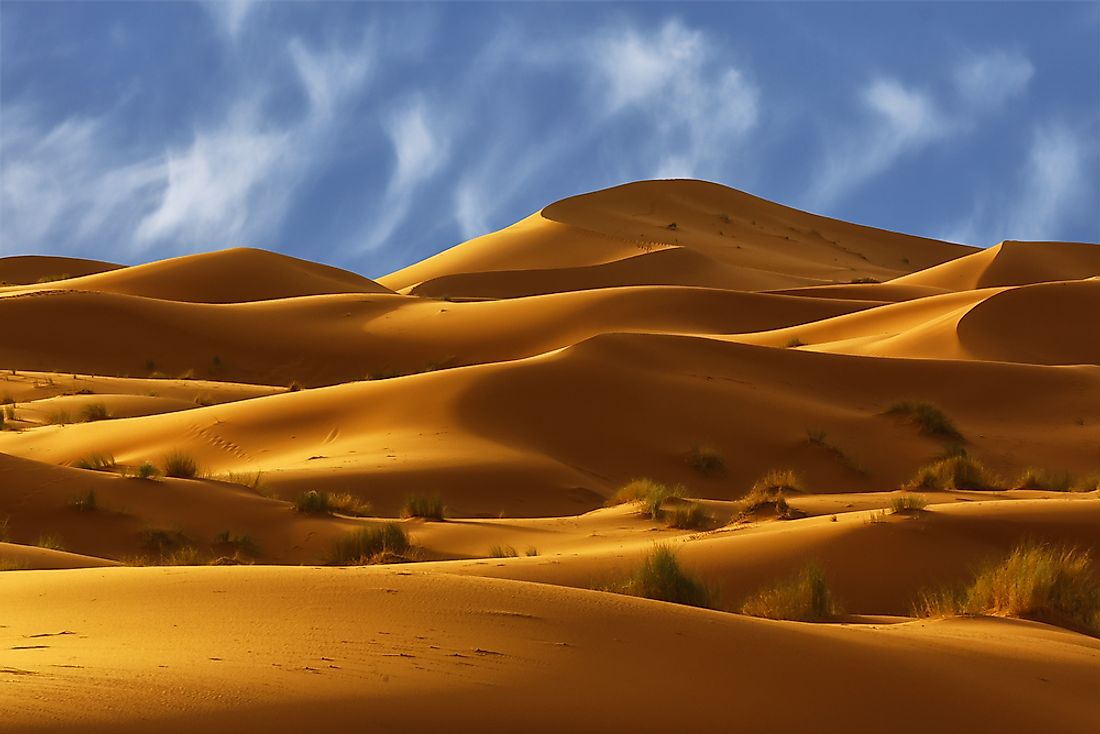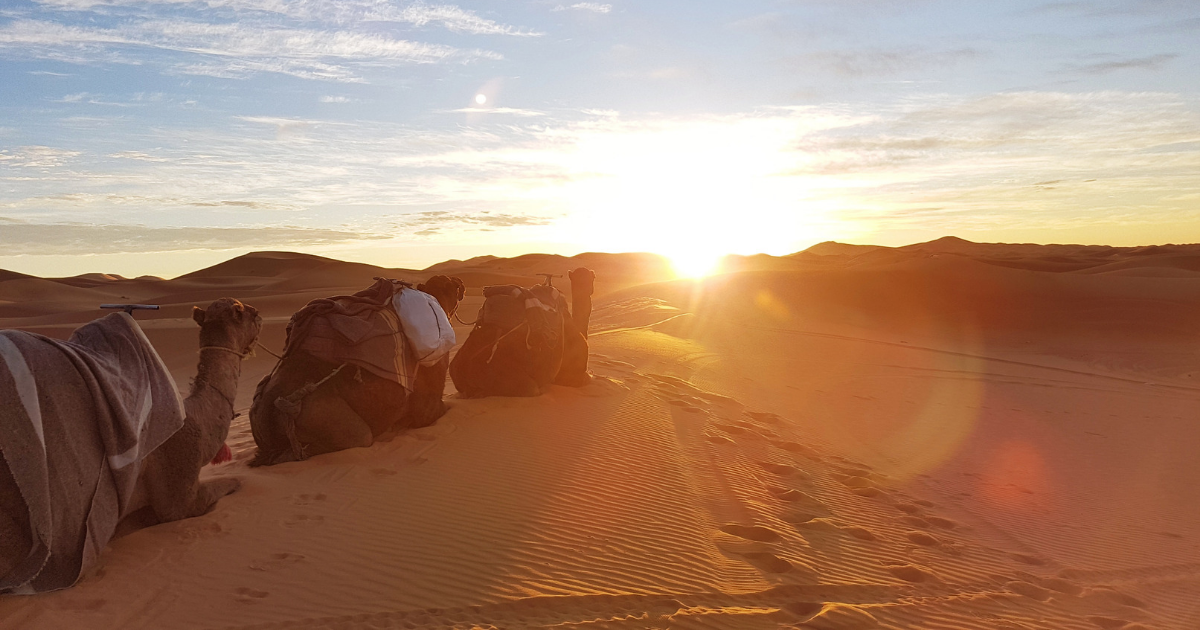Topic the sahara desert in africa: Explore the Sahara Desert in Africa, a vast landscape brimming with mystique, diverse ecosystems, and rich cultural history, inviting a journey into one of Earth"s most fascinating regions.
Table of Content
- What is the size of the Sahara Desert in Africa?
- Geography and Size of the Sahara
- Climate and Weather Patterns
- Flora and Fauna
- Cultural Significance
- Economic Importance
- Environmental Concerns
- YOUTUBE: Faces of Africa: The Sahara
- Tourism in the Sahara
- Scientific Research and Discoveries
- Challenges for Local Populations
- Future of the Sahara
What is the size of the Sahara Desert in Africa?
The Sahara Desert in Africa is the largest hot desert in the world, covering a vast area of about 9,200,000 square kilometers (3,600,000 square miles). It spans across several countries in North Africa, including Algeria, Chad, Egypt, Libya, Mali, Mauritania, Morocco, Niger, Sudan, and Tunisia.
Here is a breakdown of some key information about the Sahara Desert in Africa:
- Size: Approximately 9,200,000 square kilometers (3,600,000 square miles)
- Location: Northern Africa
- Countries it spans across: Algeria, Chad, Egypt, Libya, Mali, Mauritania, Morocco, Niger, Sudan, Tunisia
- Length (east to west): Approximately 4,800 kilometers (3,000 miles)
- Climate: The Sahara experiences extremely hot temperatures during the day and can cool down significantly at night. It receives very little rainfall, making it a dry desert environment.
- Geography: The Sahara is characterized by vast stretches of sand dunes, rocky plateaus, gravel plains, and occasional mountains. It is also home to several oases and scattered vegetation in certain areas.
The Sahara plays an important role in shaping the climate and weather patterns of the surrounding regions and is home to a variety of unique flora and fauna adapted to its harsh conditions.
READ MORE:
Geography and Size of the Sahara
The Sahara Desert, Earth"s largest hot desert, spans over 9 million square kilometers. Its vast expanse stretches across North Africa, touching several countries, including Morocco, Algeria, Tunisia, Libya, Egypt, Western Sahara, Mauritania, Mali, Niger, Chad, and Sudan. The Sahara"s geographical diversity is remarkable, featuring not only sweeping sand dunes (ergs) and flat, arid plains (regs), but also rocky plateaus (hamadas) and scattered mountain ranges.
- Northern Sahara: Characterized by mountainous regions, including the Atlas Mountains in Morocco and the Tibesti Mountains in Chad.
- Central Sahara: Home to the vast, sandy Ténéré desert and various ergs.
- Southern Sahara: Borders the Sahel region, marked by a semi-arid climate and supporting more vegetation.
The Sahara"s size and geographical diversity play a crucial role in its climate, ecosystems, and the human settlements around its edges. Its landscapes have been shaped over millennia, resulting in a breathtaking natural wonder that continues to evolve and amaze.

Climate and Weather Patterns
The Sahara Desert is renowned for its extreme climate, characterized by scorching temperatures and minimal rainfall. This vast desert experiences some of the most challenging weather conditions on the planet.
- Temperatures: Daytime temperatures regularly soar above 40°C (104°F), particularly during summer, while nights can be significantly cooler. In winter, temperatures can drop near freezing.
- Rainfall: The Sahara receives less than 3 inches of rain annually, making it one of the driest regions in the world. Rainfall is sporadic and unpredictable, with some areas remaining dry for years.
- Wind Patterns: The region is known for the harmattan, a hot, dry, and dusty trade wind blowing from the northeast or east in the Western Sahara.
- Sandstorms: Frequent and powerful sandstorms, known as haboobs, can dramatically reduce visibility and transform the landscape.
Despite these harsh conditions, the Sahara"s climate plays a vital role in global weather patterns, affecting everything from the North Atlantic Oscillation to the monsoon season in the Sahel region to the south.
Flora and Fauna
The Sahara Desert, despite its harsh climate, hosts a range of unique flora and fauna adapted to survive in extreme conditions. This biodiversity is a testament to the resilience of life.
- Flora: Vegetation is sparse, but includes species like the date palm and various acacia trees, which are crucial for providing shade and sustenance. Xerophytic plants like cacti and succulents are also common, adapted to the arid environment.
- Fauna: The Sahara is home to remarkable wildlife, including the fennec fox, dromedary camels, and various reptiles like the monitor lizard and Saharan horned viper. Birds, such as the ostrich and several raptor species, also thrive here.
- Adaptations: Many species have evolved unique adaptations to cope with the desert environment, such as nocturnal habits to avoid daytime heat, and water conservation mechanisms.
Conservation efforts are crucial to protect these species and their habitats from threats like climate change and human encroachment, ensuring the Sahara remains a haven for its diverse wildlife.

Cultural Significance
The Sahara Desert holds immense cultural significance, not only as a geographical wonder but also as a historical and cultural crossroads. Its impact on the cultures and civilizations of North Africa is profound.
- Ancient Civilizations: The Sahara was once a more fertile region where ancient communities thrived. Rock art in areas like the Tassili n"Ajjer in Algeria reveal the rich history of these early inhabitants.
- Trade Routes: For centuries, the Sahara was a conduit for trade, connecting sub-Saharan Africa with the Mediterranean and the Middle East. Caravans of camels transported goods like gold, salt, and spices across this vast desert.
- Indigenous Cultures: The Sahara is home to various indigenous peoples, like the Tuareg and Berbers, known for their rich cultural traditions, including music, art, and distinctive blue attire.
- Modern Influence: The Sahara continues to inspire modern culture, evident in literature, film, and art, drawing on its mystery and allure.
The Sahara"s cultural significance is a testament to the adaptability and resilience of human life, shaping a unique heritage that continues to fascinate and inspire globally.
Economic Importance
The Sahara Desert, while often perceived as a barren wasteland, plays a significant role in the economies of the surrounding regions and has considerable global economic importance.
- Natural Resources: The Sahara is rich in natural resources, including significant reserves of oil and natural gas, particularly in countries like Algeria and Libya. Additionally, there are substantial deposits of minerals like phosphates, iron, and uranium.
- Renewable Energy: The vast expanse and sunny climate make the Sahara an ideal location for solar energy production. Projects like the Saharan Solar Energy Plan aim to harness this potential for local and international energy needs.
- Agriculture: Despite the harsh conditions, oasis agriculture in the Sahara supports the cultivation of dates and other crops, vital for local communities.
- Tourism: The unique landscapes and cultural heritage of the Sahara attract tourists from around the world, contributing to the tourism sector in countries like Morocco, Tunisia, and Egypt.
- Trade: Historically, the Sahara was a hub for trans-Saharan trade routes. While less central today, it still plays a role in regional trade, especially in traditional industries.
The economic significance of the Sahara Desert is multifaceted, spanning from traditional practices to modern industries, highlighting its integral role in the economic tapestry of North Africa and beyond.

Environmental Concerns
The Sahara Desert, while a natural wonder, faces various environmental challenges that threaten its ecosystem and the livelihoods of people who depend on it.
- Desertification: Expanding desert borders, partly due to climate change and human activities like overgrazing and deforestation, threaten the surrounding arable land and biodiversity.
- Climate Change: The Sahara is particularly susceptible to the impacts of global climate change, with rising temperatures and altered precipitation patterns affecting its delicate ecosystems.
- Water Scarcity: The region faces acute water shortages, exacerbated by increasing temperatures and overuse of scarce water resources for agriculture and mining.
- Biodiversity Loss: The changing environment poses a threat to the unique flora and fauna of the Sahara, leading to a decline in biodiversity.
- Pollution: Oil and mining activities, along with increased human settlements, contribute to pollution, impacting both the environment and human health.
Addressing these concerns requires concerted efforts towards sustainable management and conservation, ensuring the Sahara"s environmental health and the well-being of its inhabitants for future generations.
Faces of Africa: The Sahara
Explore the mesmerizing beauty of Africa\'s vast desert landscapes! Immerse yourself in the stunning scenery, unique wildlife, and vibrant cultures as you embark on an unforgettable journey through the heart of the African desert. Watch the video now to experience the wonders of this untamed land.
The Sahara Desert Ecosystems
Delve into the enchanting ecosystems of the Sahara with this captivating video! From the shifting sands to the hidden oases, witness the intricate balance of life and discover the remarkable adaptations of plants and animals surviving in this extreme environment. Join us on an educational adventure through the Sahara\'s diverse ecosystems and gain a newfound appreciation for its miraculous resilience.
Tourism in the Sahara
Tourism in the Sahara Desert is an exploration of stark beauty and rich culture, offering an array of experiences for travelers seeking adventure and a glimpse into a unique way of life.
- Adventure Tourism: The Sahara"s vast dunes and rugged terrain provide an ideal setting for adventurous activities such as camel trekking, sandboarding, and off-road vehicle tours.
- Cultural Experiences: Visitors can engage with local communities, learning about the lifestyles and traditions of the Sahara"s inhabitants, including the Tuareg and Berber people.
- Natural Attractions: The Sahara is home to breathtaking natural features like the Erg Chebbi dunes in Morocco and the Ennedi Plateau in Chad, offering stunning landscapes for photography and exploration.
- Festivals: Participating in cultural festivals like the Festival au Desert in Mali, where music, dance, and camel races are celebrated, provides insight into the vibrant culture of the Sahara.
- Eco-friendly Tours: There is a growing focus on sustainable tourism, with guided tours emphasizing conservation and respect for the delicate desert environment.
Through these diverse experiences, tourism in the Sahara not only supports local economies but also promotes a greater understanding and appreciation of this unique region and its people.
/https://tf-cmsv2-smithsonianmag-media.s3.amazonaws.com/filer/f2/94/f294516b-db3d-4f7b-9a60-ca3cd5f3d9b2/fbby1h_1.jpg)
Scientific Research and Discoveries
The Sahara Desert has been a fertile ground for scientific research and discoveries, shedding light on both the past and the future of our planet.
- Archaeological Discoveries: The Sahara has revealed numerous archaeological treasures, including ancient rock art and remnants of lost civilizations, offering insights into human history and prehistoric climate changes.
- Climate Studies: Research in the Sahara helps scientists understand desertification processes and climate change, providing valuable data on shifting weather patterns and their global impact.
- Astronomy: The clear skies and minimal light pollution make parts of the Sahara ideal for astronomical observations, contributing to our understanding of the universe.
- Geological Research: The desert"s diverse geological features, from sand dunes to mountain ranges, are studied to learn about Earth"s geological history and resource potentials.
- Biological Studies: The unique flora and fauna of the Sahara offer opportunities for biological research, particularly in understanding species adaptation to extreme environments.
The Sahara Desert continues to be a significant source of scientific knowledge, contributing to various fields and offering a unique laboratory for researchers worldwide.
Challenges for Local Populations
Life in the Sahara Desert presents unique challenges for the local populations, who have adapted over centuries but still face ongoing struggles in this extreme environment.
- Water Scarcity: Access to fresh water is a major challenge in the Sahara, affecting both daily living and agricultural practices in these arid regions.
- Extreme Weather Conditions: Harsh climate conditions, including extreme heat and sporadic rainfall, impact health and livelihoods, making habitation and agriculture difficult.
- Economic Limitations: Economic opportunities are often limited, with reliance on traditional industries and a lack of diverse income sources, impacting the overall development of the region.
- Health Issues: The extreme environment can exacerbate health problems, while access to medical facilities and services is often limited in these remote areas.
- Environmental Degradation: Issues like desertification and climate change threaten traditional ways of life and the sustainability of habitats in the Sahara.
Addressing these challenges requires a combination of local knowledge, sustainable practices, and external support to ensure the resilience and well-being of the communities living in the Sahara Desert.
:max_bytes(150000):strip_icc()/SaharaDesert-58c1a5603df78c353c3d525d.jpg)
READ MORE:
Future of the Sahara
The future of the Sahara Desert is a subject of great interest and importance, combining challenges and opportunities as this vast region navigates environmental, economic, and social changes.
- Environmental Management: Efforts to combat desertification and adapt to climate change are critical for preserving the Sahara"s ecosystems and supporting its inhabitants.
- Economic Development: There is potential for sustainable economic growth through renewable energy projects, ecotourism, and responsible resource management, balancing development with environmental conservation.
- Technological Advancements: Innovations in technology could offer solutions for water scarcity, agriculture, and connectivity for remote communities in the Sahara.
- Cultural Preservation: Protecting and promoting the rich cultural heritage of the Sahara"s indigenous peoples will be important in maintaining their traditions and histories.
- Scientific Research: Continued research in areas like climate science, archaeology, and biology will deepen our understanding of the Sahara and contribute to global knowledge.
The future of the Sahara, while facing uncertainties, holds promise for a region that remains a vital and dynamic part of our world, with much to offer both its inhabitants and the global community.
The Sahara Desert, a marvel of nature and culture, continues to fascinate and inspire, promising a future filled with discovery, opportunity, and enduring allure in the heart of Africa.



